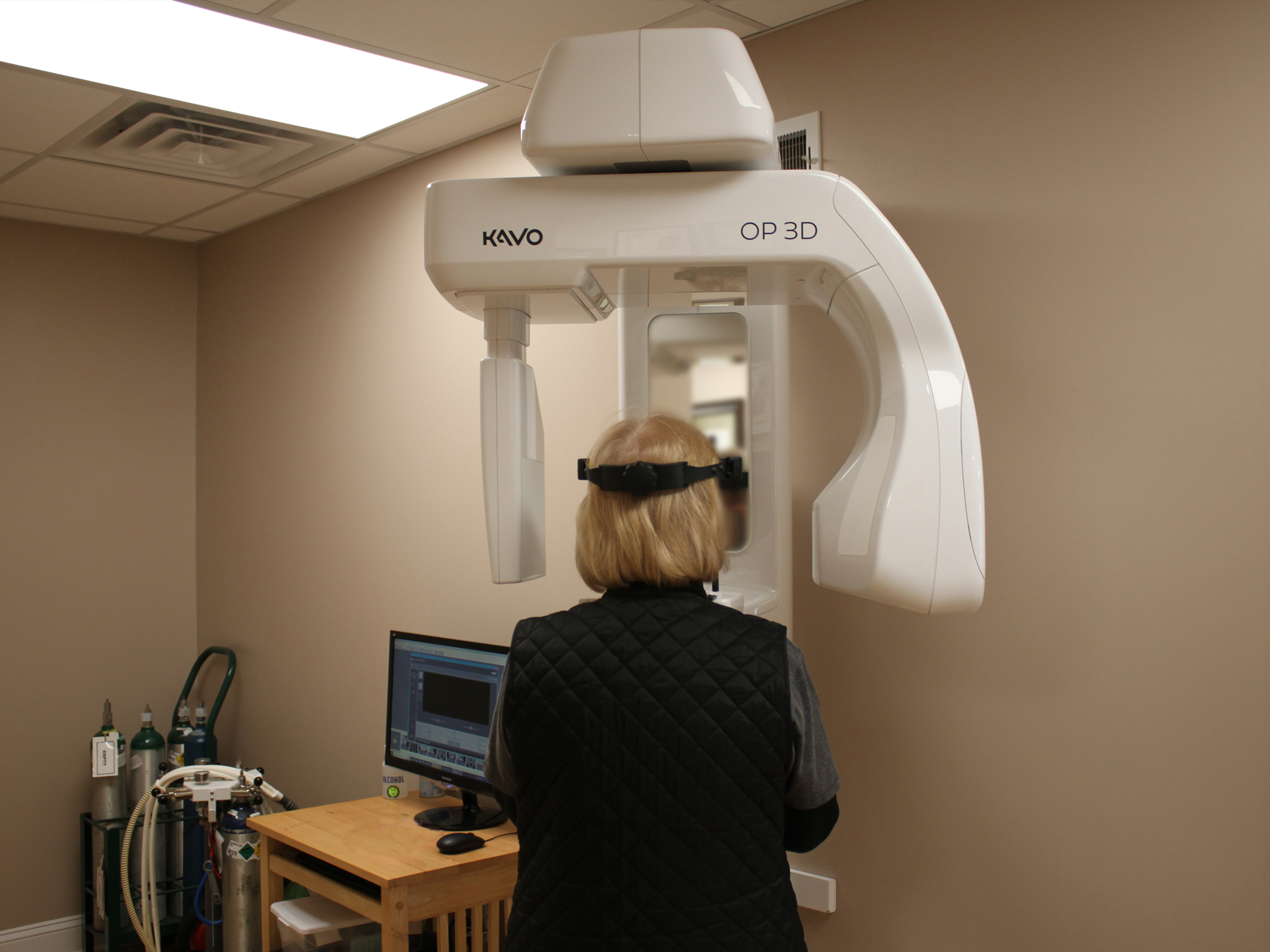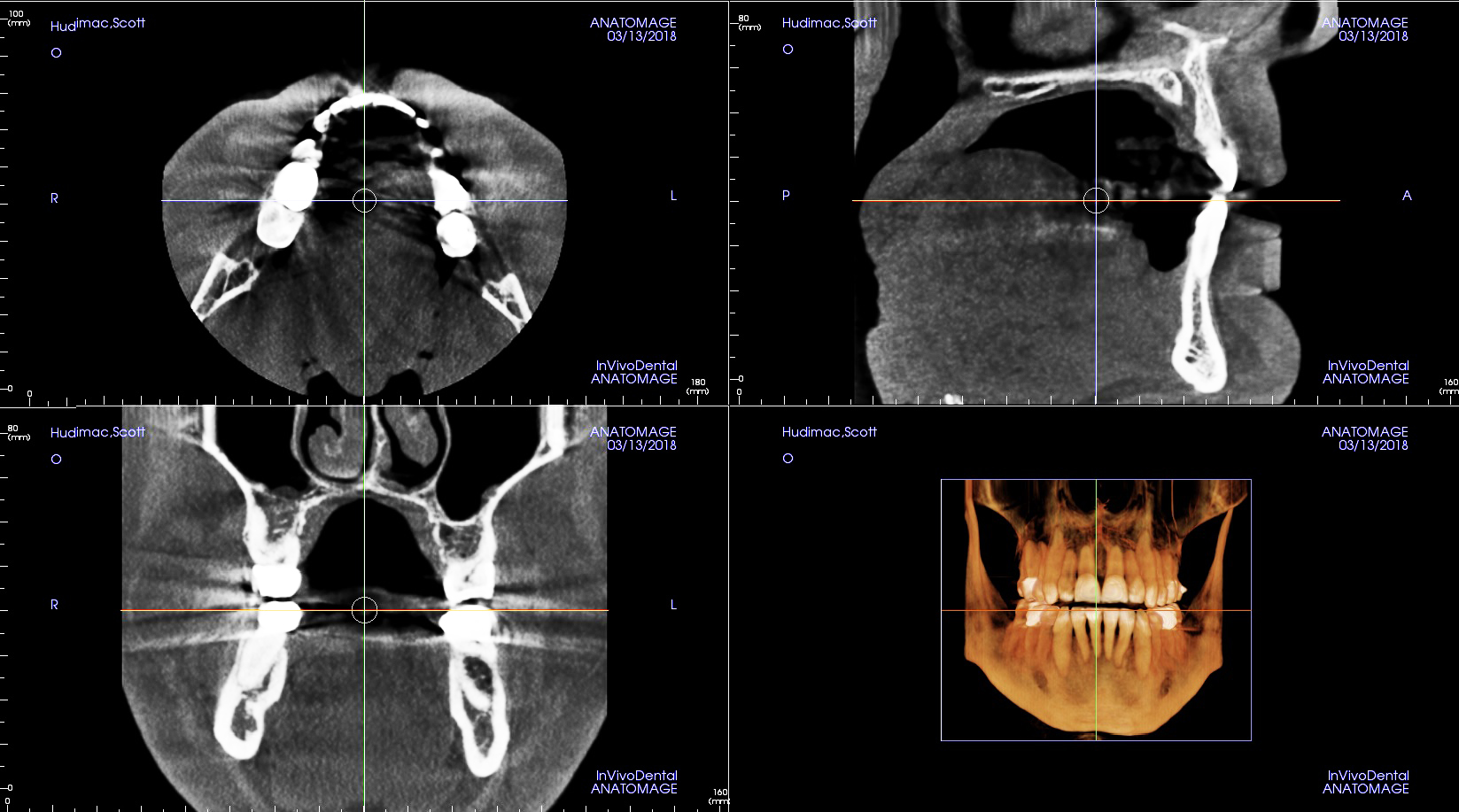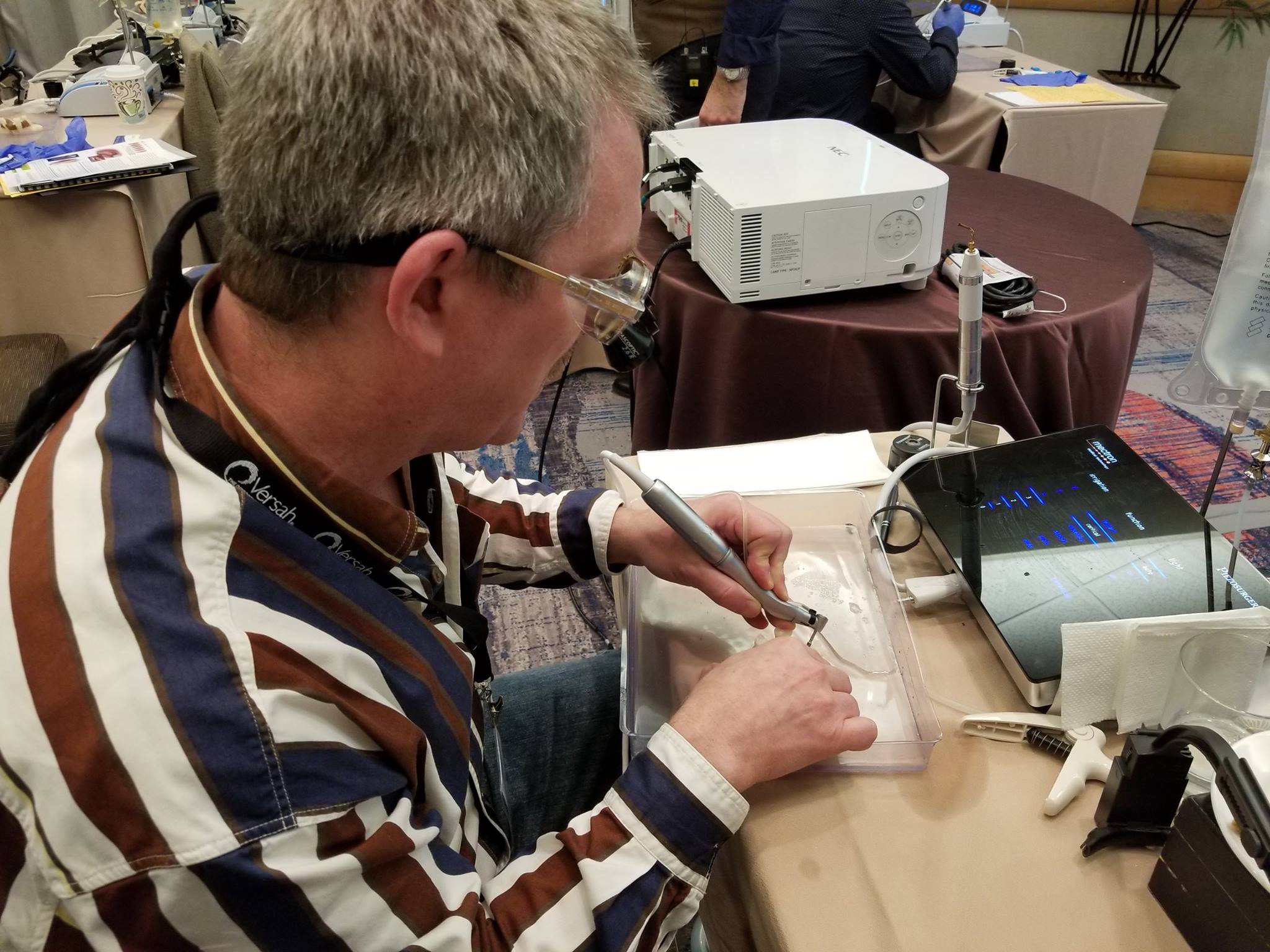Implants
Implants can replace teeth that have been missing since birth or have been lost due to gum disease, infection, trauma, or decay. They can also be used to hold a denture in place, so that with implants, patients no longer experience the slipping, moving, or irritation often associated with dentures.
Dental implants look, feel, and function like a natural tooth because they are made of a metal that is highly compatible with the jawbone and are surgically attached to the jawbone and become an integrated part of your mouth. Both small diameter and large diameter implants can be used and Dr. Hudimac can help you decide which options suits you best. The implant procedure is completed by attaching fixed or removable natural and functional tooth structures to the implant components, providing you once again with the comforts and confidence that accompanies a beautiful smile.
Our office uses state of the art technology to help patients to determine if implants are the best option for them to replace any missing tooth.
3D Cone Beam CT Scans
Dental cone beam computed tomography (CT) is a special type of x-ray equipment used when regular dental x-rays are not sufficient. We use this technology to produce three dimensional (3-D) images of your teeth, soft tissues, nerve pathways and bone in a single scan.
Versah Densah Bur for Implant Placement
The Densah® Bur technology is based on a novel biomechanical bone preparation technique called “osseodensification.” Unlike traditional dental drilling techniques, it does not cut away bone tissue. Rather, bone tissue is simultaneously compacted and auto-grafted in outwardly expanding directions from the site. Dense compacted bone tissue produces stronger retention for your dental implant and may facilitate faster healing.
Computerized Implant Planning
With the aid of a Cone Beam CT scan, we rely on in-depth 3D imaging to make decisions on your implant’s placement, reducing the chance of complications significantly. We employ virtual implant placement software to analyze your CT scan, which then provides a variety of perspectives and views that simply would not be available without it.
Dental Implant Benefits over removable options like Partials & Dentures:
- Better ability to chew.
- Improve speech.
- Improved oral health
- Better appearance
- Protection against bone loss
Candidates for dental implants need to have healthy gums and adequate bone to support the implant. Any procedure does come with risk. Dr. Hudimac will explain all the benefits and risks to patients before proceeding with treatment and is happy to answer any questions that patients may have.
Are dental implants covered by insurance?
A short answer is—yes, they can be. Some insurance plans do cover portions of dental implants, but not all do. Additionally, limitations and exclusions in your plan’s fine print could reduce or eliminate any benefit you may have towards implants. It’s best to understand the type of treatment you need and what your plan will pay for before moving forward.
The full answer depends on the details of your individual plan. There are many cost factors to consider when getting a dental implant, including:
- Consultations
- X-rays
- Treatment before surgery, such as extractions or bone grafts
- The final restoration (crowns, bridge, implant retained partial/dentures)
All of these services and items can add to the final cost. Your plan may cover some of the costs, but you will likely pay out-of-pocket for what is not covered.
Also, unless you require dental implants due to an accident, your plan may categorize dental implants as a cosmetic procedure and deny coverage.
Our treatment & insurance coordinator is very well versed in many insurance plans and will work with you to determine how your insurance might pay towards the implant process.
Partial Dentures
Partial dentures are indicated if some serviceable teeth are present for support in conjunction with the gums and jawbone. A partial denture, though removable, provides replacement of the appearance & function for missing teeth.
Full Dentures
Full dentures are used if there are not any teeth left for support. The full denture covers more of the jaw than a partial denture and is partly held in place by natural vacuum in the mouth.



